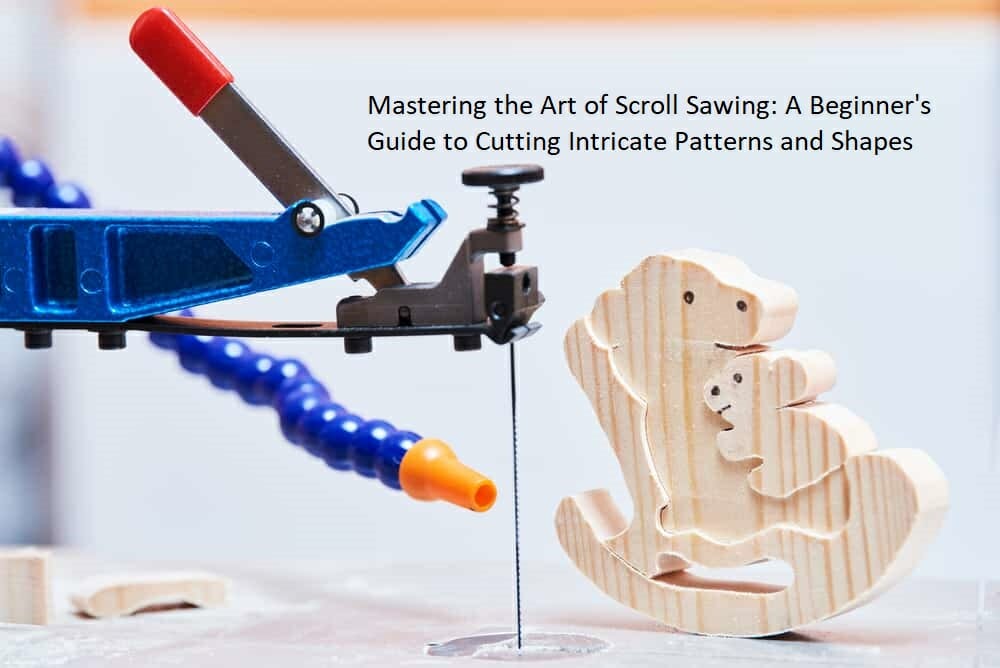To use a scroll saw for intricate designs, start by choosing the right blade for your material and project. Draw your design onto the material, and adjust the blade tension and speed on the machine accordingly. Put on your safety gear, including eye and ear protection, and start cutting out your design. It’s important to take your time and carefully guide the material through the the scroll saws blade, making sure to keep your fingers and hands away from the blade at all times.
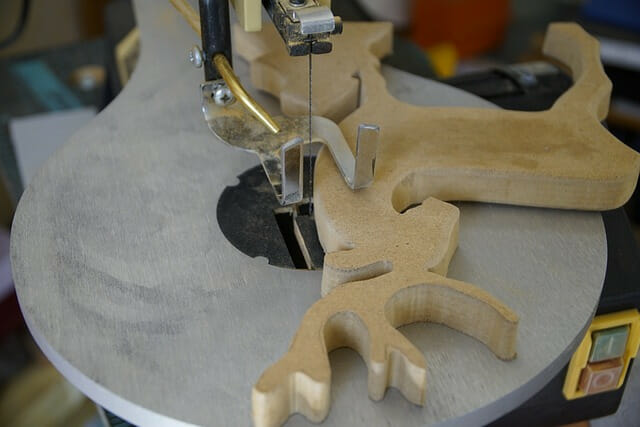
Getting Started: A Beginner’s Guide to Setting Up Your Scroll Saw for Optimal Performance
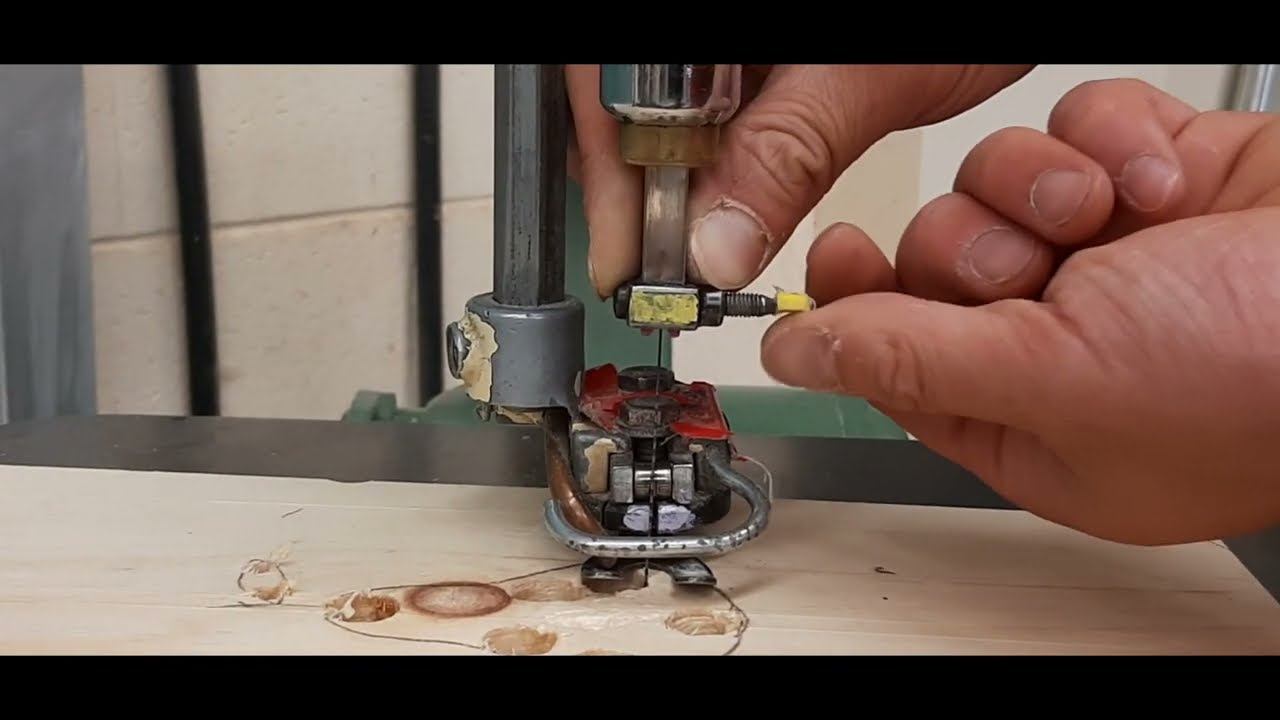
- Before starting your scroll saw project, it’s crucial to draw your design or pattern onto the wood with a pencil. You want to ensure that your markings are visible and accurate, as they will serve as a guide for cutting.
- Positive space refers to the areas of wood that remain intact, while negative space is the space where the wood is cut away.
- Bridges connect different parts of your design, creating positive space in the process.
- As a beginner, it’s best to start with a simple design, gradually working your way up to more complex patterns.
- You can find numerous scroll saw design templates online, which can help inspire and guide your creativity.
Stay Safe While Using a Scroll Saw: Essential Safety Equipment to Wear

- It’s important to prioritize safety when using a scroll saw. Before turning on the machine, make sure to put on your safety goggles to protect your eyes from broken blades and sawdust.
- If you have long hair, be sure to tie it back to prevent it from getting caught in the blade.
- Consider wearing a dust mask as well to avoid inhaling any sawdust. Avoid wearing any loose clothing or jewelry that could potentially get caught in the blade and cause injuryEnsuring Safe Use of a Scroll Saw: Properly Securing it on Your Work Surface Before using your scroll saw, carefully review the manufacturer’s instructions for securing the machine to your work surface using bolts, screws, or clamps.
- For wood that’s about 1/8 inch (3.2 mm) thick, use a #2 or #3 blade. Thinner wood will require a smaller blade. Keep in mind that the lower the number of the blade, the smaller it is.
- Smaller blades tend to cut through the wood more slowly, which can give you greater control while using the scroll saw.
- If you’re cutting intricate designs, smaller blades are often more accurate and can help you achieve finer details.
Selecting the Right Blade for Thicker Wood: #5 or #7 Blade for Wood around 3/4 inch (19 mm) Thick
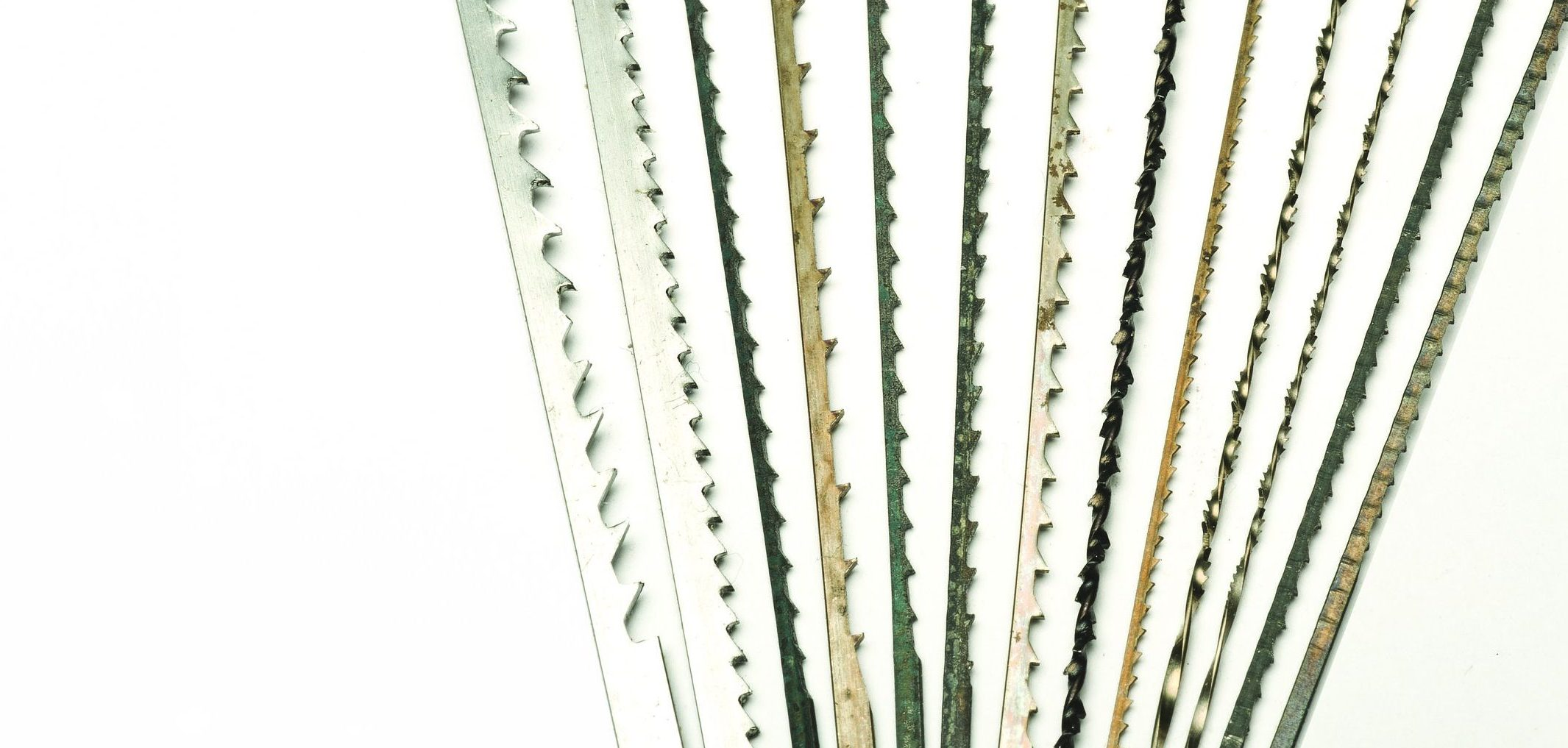
- As the thickness of the wood increases, you’ll need to use a larger blade to cut through it. Keep in mind that the higher the number of the blade,
- If you’ll be cutting more than one piece of wood at a time, consider the thickness of the overall stack. Even if the individual pieces are thin, you’ll likely need to use a larger blade to cut through the entire stack.
Properly Setting the Blade Tension on Your Scroll Saw
- Once you’ve selected the correct blade, adjust the tension according to the manufacturer’s instructions. A properly tensioned blade should not move more than 1/8 inch (3 mm) in any direction.
- Finding the right tension is about striking a balance between having the blade tight enough to maintain accuracy without being so tight that it breaks.
- You can also check the tension by plucking the blade like a guitar string. A properly tensioned blade will make a sharp “ping” noise.
- Generally, larger blades can withstand higher tension.
Starting Up Your Scroll Saw: Turning On the Saw and Light
Starting your scroll saw is a straightforward process that involves plugging the machine into an electrical socket, turning on the power switch, and switching on the machine light. These steps ensure that you have adequate power supply and visibility as you use the scroll saws again.
- start your scroll saw, plug it into an electrical socket and turn the power switch on. Be sure to also turn on the machine’s light so that you can see your work clearly while you use the saw.
- If your scroll saw doesn’t come with a built-in light, position a bright lamp so that you can see both the saw and your work. Alternatively, you can purchase specialty lights that mount directly onto the scroll saw.
- If your machine has a dust blower, switch it on as well. This will help remove dust from your work as you use the saw.
Cutting Out Your Project: Tips for Using a Scroll Saw
Why You Should Test Your Scroll Saw: Tips for Cutting Scrap Wood Safely and Accurately
To start, select a piece of scrap wood that is similar in thickness, grain pattern and density to the wood you plan to use for your project.
Next, make a small cut on the scrap wood to test the blade’s size stroke speed and tension. Ensure that one direction of the cut is straight and the blade cuts are clean, without any splintering or tearing.
If the cut is not smooth or if the blade appears to be struggling, check the tension of the blade and adjust it if necessary. You may also need to select a other saw blades or different blade size or type band for most saws and saw blades, if the current one is not suitable for the wood you are using.
Additionally, make sure that the lighting in your workspace is sufficient for you to see the wood, fine blade and the blade clearly.
Adjusting Scroll Saw Speed for Thin Materials: Set the Speed to Slower speed
When working with thin materials on flat blades with a band saws, type a scroll saw, it’s important to adjust the speed of the blade appropriately to avoid damaging the thin material.
A high blade speed on thicker blades can cause the material to vibrate or even break, resulting in a less-than-perfect cut. To prevent this, set variable speed of the blade changes on the scroll saw to a slow speed when working flat blades with thin materials.
This will allow the blade to make clean, precise cuts without exerting too much pressure on the material.
Scroll Saw Speed for Softwood: Choose a Faster Speed
When working with softwoods like maple on a scroll saw, it’s important to choose a faster cutting speed to achieve clean and efficient cuts. Softwoods tend to be less dense than hardwoods, so a slower blade speed can cause the wood to burn or become damaged.
However, it’s essential to note that the ideal speed for each type of wood may vary depending on its thickness and texture. It’s always a good practice to test out different speeds on a scrap piece of wood before starting a project,
Guiding Your Design with Both Hands: Best Practices for Scroll Sawing
Guiding your project with a scroll saw requires precision and control to achieve accurate, straight cuts and avoid injury. To begin, bring your project up to the blade and aim it towards the first line that needs to be cut. Press the wood down and forward to guide it into the blade, making sure to hold down foot keep your fingers away from the blade’s path.
- First, always keep an eye on your fingers and the blade to make sure that the blade doesn’t get too close to your hands. It’s essential to maintain a safe distance between your fingers and the blade at all times to prevent injury
- Secondly, keep both hands on the wood at all times to maintain control and prevent the saw from jumping and causing a jagged cut.
- Lastly, it’s important to stick to the speed of the machine and avoid rushing the wood through the saw faster than the blade’s cutting speed.
Making 90-Degree Turns: Tips for Safely Removing Your Project from a Scroll Saw
When creating intricate designs on a scroll saw, you may need to make 90-degree turns to achieve the desired shape. To do this safely and efficiently,
To remove your project from the blade, turn off the saw and carefully lift the wood up your upper arm and hold down foot away from the blade. This will give correct tension and prevent the blade from bending or breaking and damaging your project.
Once most scroll the wood is removed from pin end of the blade, you can reposition it to make the 90-degree turn. Then, bring the wood back towards the blade and continue cutting.
Safely Shutting Down: Best Practices for Turning Off and Storing a Scroll Saw
After completing a project or a session of scroll sawing, it’s important to shut down the machine and store it properly.
To shut the band saw blades back down the machine, first, turn off the power and unplug the saw from the outlet. Then, remove the blade from the machine and clean the blade, table, and other parts with a soft cloth.
Next, store the saw in a dry and cool place away from direct sunlight and moisture. Cover the saw with a dust cover or cloth to protect it from dust and debris when not in use.
Get Creative with Your Woodworking Projects: Mastering the Scroll Saw
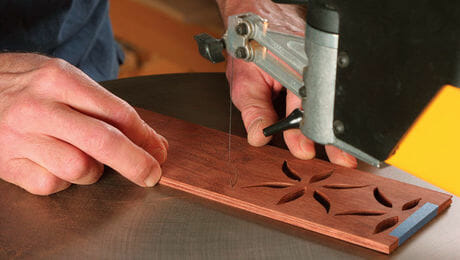
The scroll saw is a great tool, a versatile tool that allows woodworkers to create intricate and detailed designs in wood. With a little bit of practice and patience, you can with power saws create beautiful and unique pieces detailed work that showcase your creativity and skill.
One of the first steps in mastering the scroll saw is to become familiar with its various parts and functions. This includes the blade, table, speed control, and blade tensioning system. It’s important to select the appropriate blade for your project,
Mastering the Curve: How to Make Smooth, Fluid Cuts with Your Scroll Saw
One of the key skills to master when using a scroll saw is the ability to make smooth, fluid cuts. This is a skill level is especially important when cutting curves, or straight lines, as any jerkiness lower speed, or hesitation in your movements can result in jagged, uneven lines.
To start, it’s important to have a solid understanding of many scroll the basic techniques for using the scroll saw. This includes proper blade selection, speed control, and tension adjustment.
Making Wooden Puzzles with a Scroll Saw: Tips and Tricks
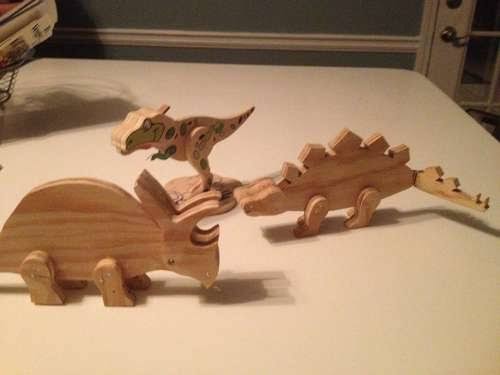
Making wooden puzzles with a scroll saw can be a fun and challenging woodworking project. Here are some tips and tricks to help you create your own wooden jigsaw puzzles too:
- Start with a simple design: If you are new to making wooden puzzles, start with a simple design. A basic jigsaw puzzle with larger pieces is a good place to start.
- Choose the right wood: Choose a wood that is durable and easy to work with, such as birch plywood or Baltic birch.
- Use a fine-toothed blade: Use a fine-toothed blade to create smoother cuts and more intricate details.
- Sand the pieces: Sand the pieces after cutting to remove any rough edges or splinters.
- Use a puzzle template: Use a puzzle template to help guide your cuts and ensure that the pieces fit together properly.
- Test the puzzle: Test the puzzle as you go along to make sure the pieces fit together properly and the puzzle works as intended.
- Add your own twist: Once you have mastered the basics, try adding your own twist to the puzzle design, such as adding more pieces or creating a unique shape.
FAQS
How is the center cut out?
The center of a wooden puzzle can be cut out using a scroll saw by drilling a small hole in the center of the area to be removed, then feeding the scroll saw blades the blade through the hole and cutting along the outline of the shape.
What is a scroll saw?
A scroll saw is a power tool used for cutting out intricate shapes and patterns in wood, metal, plastic, and other materials. It features a thin, vertical blade that moves up and down rapidly, allowing the user to make precise cuts.
How do I choose the right saw blade for my project?
The type of blade you use will depend on the material you’re cutting and the complexity of the pattern. A fine-toothed blade is best for cutting intricate designs, while a coarse blade is better for rougher cuts.
How do I set up my scroll saws?
To set up your scroll saw, first make sure it’s on a sturdy surface and that the blade is properly tightened and aligned. Adjust the speed of the saw to match variable speed of the material you’re cutting.
How do I make curved cuts with a scroll saw?
To make curved cuts with a scroll saw, guide thicker pieces of your material into the blade using both hands and adjust the wood as necessary for small or tight turns.
Can I cut metal with a scroll saw?
Yes, a scroll saws can be used to cut metal as well as wood and other materials. However, you will need to use a specialized blade designed for cutting different materials of metal,
How do I maintain my scroll saw?
To keep your scroll saws in good working condition, regularly clean it and lubricate the moving parts.
Conclusion
A scroll saws is a versatile tool that allows woodworkers to create more intricate cuts and detailed designs in a variety of projects. By following the proper safety precautions and practicing on scrap wood first, beginners can quickly learn how to master the scroll saws and create beautiful pieces of art.
Whether you are interested in making puzzles, decorative pieces, or other woodworking projects,
